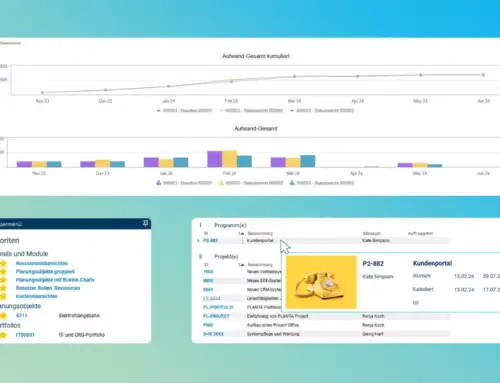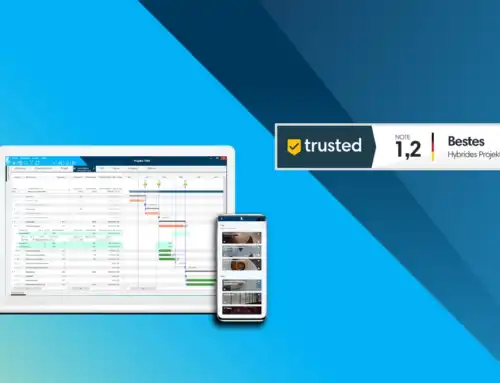Working Time Recording
| Translated by Julian Hammer
Time Recording Obligation – Background Information, Questions, and (Digital) Implementation
Trust is good, recording is better!
According to an ECJ judgment, all employers are obliged to record the hours worked of
their employees. That is, in an “objective, reliable, and transparent manner.”
It is hence not enough to confirm “pro forma” that employees work for 8 hours a day and take a 30 minutes break. Instead, the precise hours worked, with start and end time, must be recorded.
Companies which have hitherto allowed their employees to work on the basis of trust, now have to respond to this requirement.
This article provides you with background information, realization options, and tips for digital time recording.
Did you know?
There has already been an ECJ judgment in 2019 which ruled that each EU country is to implement comprehensive time recording. However, German companies have procrastinated on this question. In September 2022, the Federal Labour Court has reaffirmed that the judgment also applies to German labor protection laws, ordering that the provision be implemented without delay.
Time Recording – Advantages, Questions, and Challenges to be Expected
There is no doubt that employees must be protected from overwork. This is why employees must record hours worked in a legally certain way. And of course companies also benefit from time recording as it permits to record capacities and thus to improve planning. There are, however, possible tripping hazards: Employees cherish working on the basis of trust, being flexible, and working in home office. At first glance, the court’s decision appears to be contrary to this.
However, this is not necessarily true!
Recording of hours worked – Challenges and Reservations
What are possible reservations – and where do they come from?
More bureaucracy, less flexibility:
Some companies have never recorded hours worked before. In such a case, the implementation of time recording presents additional effort. The idea of additional effort is rarely met with acceptance – as was the case, for example, at Bitkom. The branch association campaigns for the innovative capabilities and competitive position of its members. It does not come as a surprise that the implementation of additional prescriptions are met with criticism. For regulative measures – a rigid time recording, for example – can have a negative impact on the agility of companies and impair their ability to act on the market. Association members have therefore expressed their skepticism regarding a digital “check clock”. But some companies, which are members of the association themselves and had been practicing time recording before, did not join the others in their skepticism: For there are very unbureaucratic ways of time recording – for example with the help of an adequate software tool. These tools come with an additional benefit because recorded hours can also be used for project evaluation and be considered in planning later. Therefore, time recording does not impair productivity but helps to ensure competitiveness!
Employee acceptance:
Although the purpose of this law is to protect them, many employees will not like the idea of recording their hours worked. The new provision feels like surveillance and may convey a notion of mistrust. As it is often the case with changes, conflicts and dissatisfaction cannot be completely avoided. Any initial rejection can, however, easily be resolved by transparent communication and straightforward digital tools.
Costs and difficulties of implementation:
Especially for smaller-sized companies, implementation can pose a challenge. Eventually, someone must check the time recording data and take care of its correct recording and storage – not an exciting task. However, this is not inevitable: Thanks to digitalization, the effort can be kept at a minimum, for suitable software tools take charge of these tasks and carry them out smoothly and reliably.
Checklist: Important Questions and Answers on Time Recording
But all reservations apart, there are several important questions with regard to the law. These are our answers to the most important points:
- Who is responsible for the recording of hours worked?
It is generally in the employers responsibility to make a suitable time recording system available and to verify the compliance of the recorded times with legal provisions. This certainly does not mean that the company’s management has to carry out time recording themselves: employees must adhere to the rules and reliably document their hours worked. - Does time recording has to be digital?
No – hours worked can also be recorded on paper. - What are the advantages of digital recording?
Although a new system requires training: recording hours worked with software tools is unbureaucratic and secure. Hours are recorded to the minute on a digital time sheet and can only be consulted by authorized persons. From a privacy point of view, a digital time sheet is therefore better than a list on paper. Digital time recording serves the purpose of the law particularly effectively since labor protection violations are immediately visible. It allows to avoid any misunderstanding since extra hours are documented in a clear and reliable way – this also includes the documentation of whether time recording was performed correctly. With the digital approach there will be no more paper filing or organization of individual excel files.
- Privacy: What is to be kept in mind? Where and for how long is the time recording data stored?
All recorded data must only be used for the specific purpose for which they were recorded, i.e. for the monitoring of hours worked. Like all personal data, they must only be until the purpose of their collection is fulfilled. Employees must be informed on who can access their data. They also have the right to demand information on saved data at any time – and to have data rectified if necessary. Digital solutions must therefore be reliable and comply with GDPR.
- How does a simple implementation look like for small companies?
Small companies which previously worked without time recording do not have to fear a lot of bureaucratic effort: When the right software tool is used, hours worked can be recorded intuitively, completely, and legally certain.
PLANTA pulse helps small companies to easily get started with time recording. With PLANTA as a hybrid system companies can furthermore seamlessly combine full PM functionality and agile teamwork. This way, all employees can be integrated in the company’s project management, even if they only record their hours worked and manage their tasks!Find out more:
Time Recording, New Work, and Home Office – No Problem!
Over the last years, topics like new work and trust-based working hours were intensively discussed and not least since the Covid-19 pandemic, working in home office has become an integral part of the working world. Especially for young professionals the option to work from home presents a basic condition for accepting a job and working in spatially separated teams is no longer uncommon.
The requirement to record hours worked does not present an obstacle for remote work. Flexibility, task-based work, and trust continue to play an important role. For the law does not prescribe a rigid organization of working time – it must simply be documented!
This is particularly important because when working in home office it becomes difficult to draw strict boundaries between personal life and work and some employees don’t even realize that they work too much and do not comply with prescribed rest periods. At the same time, employees enjoy a certain freedom when it comes to the organization of their working time.
Luckily, digital tools allow to accomplish this task in a mobile and unbureaucratic fashion. Whether at home on your PC or on the road via smart phone – a suitable software tool allows you to record working time without gaps and without effort.
Overwork can make you sick
According to an WHO study, overwork (more than 55 hours a week) is responsible for an increase in lethal heart diseases by an alarming 42%. Overly long working times are also often the cause of strokes, psychological problems, and other health issues. It is therefore little surprising that companies are obliged to respect labor protection laws by making time recording mandatory. For if working times and extra hours are rigorously documented, prescribed rest periods are more likely to be observed. Furthermore, in times of remote work, it is particularly important to separate work and personal life.
Two-in-One: Combine Working Time Recording and Project Time Recording
The new law “only” requires that hours worked be recorded – however, the implementation working time recording lets you enjoy further benefits without additional effort. If your company, for example, organizes its business based on projects, you can seamlessly record working hours and project hours using one and the same tool!
Time recording then becomes more than just a requirement. It can also help you to monitor project progress and improve your resource utilization. The recorded project working time allows companies to plan new projects in a more reliable manner, to stay on top of the progress of current projects, and to get analyses at the push of a button. This allows you to identify whether delivery dates can be met or whether delays can be expected and to take countermeasures in good time!
And I cannot do this using Excel tables? You do, however, they are not the most adequate means for posting project hours. They are even said to eat away productivity in daily routine. The occurrence of errors is almost inevitable. As opposed to that, web-based project time recording is reliable and unbureaucratic.
Proven benefits:
Experience shows which aspects are met with particular acceptance on part of the employees: Working time recording with a collaboration tool which also allows for the recording of project hours.
This enables employees to plan their tasks independently while benefiting from easy communication in the team!
Losan Pharma GmbH, for example, has managed to integrate all of their
600 employees when they implemented the PLANTA pulse tool for collaboration and time recording!
How does this benefit the company? Find out more:
Recording Hours Worked and Changing from Trust to Control – This Is How You Make It Work
To protect employees, hours worked must be documented in detail. However, since human beings are involved, there may be disagreements. For who will be happy to go from “working based on trust” to a method which looks like “surveillance”?
This demands a certain amount of tact and sensitivity. It is the management’s role to communicate the benefits: It is in the employees’ interest that the occurrence of extra hours is not ignored and swept under the carpet. It is not admissible to use working time data for performance monitoring: The only purpose of time recording is to make sure that employees do not work too much and that the rest periods they are entitled to are observed.
And if a new software is implemented? Such a restructuring calls for skilled digital leadership and transparent communication. If decisions are simply decreed “from top down” while leaving employees to their own, there is not too much enthusiasm to be expected. It is better to involve the team as much as possible and to appoint contact persons within the company who can communicate the benefits of these new processes.
Everything done. Everything at one glance. In a single tool!
Combining working time recording and project planning?
PLANTA allows you to do this in an audit-proof manner – clearly structured and simple, even when on the road.
Related Posts
RECENT POSTS
Speakers of the 21st PLANTA User Forum 2024
Ameline Fauchon2024–04-22T11:01:53+00:0022. April 2024|
PLANTA project Update Optimizes Usability and Resource Planning
Andrea Jennifer Schmidt2024–04-22T11:03:25+00:0018. April 2024|
Best Hybrid System in Project Management Software Test
Beate Schulte2024–04-10T09:23:33+00:0015. February 2024|
















